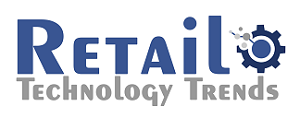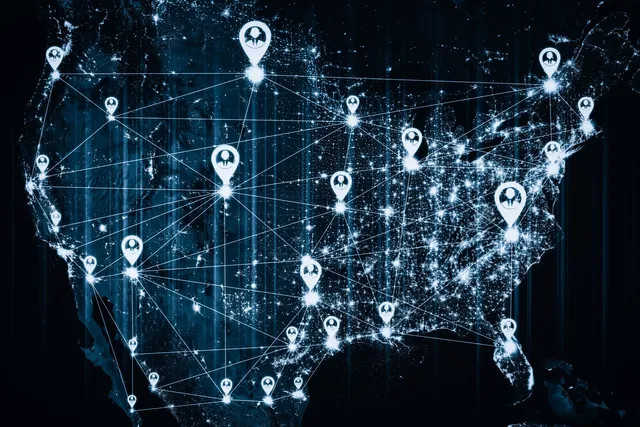Compliance In A Global Supply Chain: Navigating Complex Regulations With Technology
In the relentless whirlwind of global regulatory changes, businesses face mounting challenges in achieving compliance within their expansive supply chains. With the business world continually changing and more than 350,000 regulatory alerts popping up worldwide in 2022, it’s clear that we need to get creative to stay ahead of the game. Let’s explore some fresh and innovative solutions to tackle these challenges head-on! This blog delves into the complexities businesses encounter and explores the pivotal role technology plays in overcoming compliance hurdles.
Meeting global compliance demands requires flexible, dynamic approaches. As regulations continuously evolve, traditional methods are no longer sufficient. The complexity of global supply chains necessitates real-time, adaptive solutions, such as supply chain analytics and parts intelligence, that can keep up with shifting rules and requirements.
The role of technology in achieving compliance has never been more critical. Gaining real-time visibility is essential as companies navigate the complexities of global regulatory environments. A well-defined strategy is necessary to stay competitive and compliant.
With the rise of cybersecurity threats and increasing concerns over data privacy, the regulatory landscape continues to change rapidly. This post will examine how businesses can effectively navigate this dynamic environment using the right tools and strategies.
Navigating Compliance Challenges in Global Supply Chains
As businesses extend their reach globally, the complexities of compliance grow exponentially. Different regions have unique rules and regulations, covering everything from documentation to quality standards. Common challenges businesses face include:
Diverse Regulatory Landscape
Navigating a patchwork of regulations across different regions can feel like solving a complex puzzle. Every country or region has its own set of rules, from import/export regulations to product-specific standards. For instance, a pharmaceutical company shipping life-saving vaccines may encounter strict temperature control requirements in one region and extensive documentation requirements in another. The challenge is understanding these regulations and harmonizing them to ensure smooth global operations.
Documentation Overload
With the global market expanding, so too does the volume of paperwork businesses must handle. From certificates of origin to various compliance documents, businesses often find themselves overwhelmed with paperwork to meet the varying demands of each market. This burden can drain time and resources and increases the risk of errors. A scenario where a shipment is delayed due to missing paperwork, resulting in financial losses, is all too common.
Quality Control
Ensuring products meet the diverse quality standards of each market is a multifaceted challenge. Companies need a flexible quality control system that adapts to each market’s unique regulations. Failing to meet these standards risks not only compliance but also public health and safety.
In light of these challenges, businesses recognize the need for a comprehensive, adaptable solution—setting the stage for the role technology and real-time visibility play in overcoming these issues.
The Role of Technology in Overcoming Compliance Challenges
Advantages of Technology for Regulatory Compliance
Adopting technology provides a transformative approach to managing compliance. Businesses that leverage technology often experience smoother processes, enhanced efficiency, and fewer compliance-related penalties.
Streamlined Processes
Technology helps streamline operations, reducing the chances of error in compliance tasks. Automation ensures higher accuracy, minimizing the need for manual intervention.
Reduced Financial Penalties
Studies have shown that companies with tailored compliance strategies experience up to 30% fewer penalties. Technology enables a personalized approach to compliance, effectively mitigating risks.
Real-Time Visibility: A Crucial Tool for Compliance
Real-time visibility is key to maintaining compliance. It enables businesses to track shipments and identify any deviations from regulatory standards promptly.
Proactive Issue Resolution
With real-time insights, businesses can quickly identify and address potential compliance issues before they escalate, preventing costly setbacks.
Informed Decision-Making
Immediate access to accurate data enhances decision-making, allowing businesses to take proactive steps in maintaining compliance.
The Importance of Real-Time Visibility in Global Supply Chains
Transparency Across the Supply Chain
Real-time visibility increases transparency, allowing all stakeholders to track goods through every stage of the supply chain.
Risk Mitigation
Instant access to data helps mitigate risks, enabling businesses to address compliance issues proactively and avoid disruptions.
Key Benefits of Real-Time Visibility in Global Supply Chains
Enhanced Transparency
Real-time visibility ensures transparency by providing stakeholders with instant access to crucial data. It enables businesses to monitor goods in transit, identify bottlenecks, and optimize processes seamlessly.
Immediate Insights for Quick Decision-Making
Access to real-time data allows for swift decision-making, helping businesses quickly respond to challenges such as disruptions, deviations, or changing regulatory demands.
Proactive Risk Mitigation
Continuous monitoring through real-time visibility enables proactive risk management. By identifying potential issues early, businesses can take corrective actions immediately, reducing the likelihood of compliance lapses and disruptions.
Adaptability to Regulatory Changes
Given the constant evolution of global regulations, real-time visibility offers the flexibility to adjust to changes quickly. This ensures the supply chain remains compliant, avoiding fines and disruptions.
Improved Collaboration
Real-time visibility enhances collaboration across the supply chain. Manufacturers, distributors, and logistics partners all benefit from access to the same data, improving communication and coordination, resulting in a more synchronized and compliant supply chain.
Supply Chain Technology Solutions
In the fast-evolving field of supply chain technology, businesses are continually looking for innovative solutions to address compliance challenges and improve operational efficiency. The market is filled with a wide range of technology solutions tailored to the complexities of global compliance. These solutions span from inventory management systems and GPS tracking to blockchain applications, offering various tools designed to enhance efficiency and ensure compliance. However, not all solutions are equally effective, and the demand for real-time visibility and customized compliance features often remains unmet.
Types of Supply Chain Technology Solutions
Blockchain Integration: By utilizing decentralized ledgers, blockchain technology enhances transparency and traceability throughout the supply chain.
AI and Machine Learning: Advanced algorithms and machine learning applications analyze large datasets, providing predictive analytics and proactive risk management.
IoT Monitoring Devices: Internet of Things (IoT) devices enable real-time tracking and monitoring, offering immediate insights into the location and condition of products.















